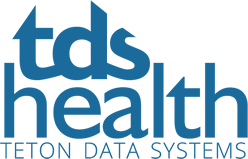Root Cause Analysis in Health Care: A Joint Commission Guide to Analysis and Corrective Action of Sentinel and Adverse Events

Description
According to World Health Organization statistics, adverse events in health care affect 1 in 300 patients, resulting in tragedy for patients and their families and taxing an already overburdened health care system. To address and prevent reoccurrences of such errors, The Joint Commission’s Sentinel Event Policy requires accredited health care organizations to identify and examine the system failures or defects that contributed to the adverse or sentinel event. Root cause analysis (RCA) provides a systematic approach to identifying these contributing factors. And in the interest of identifying potential safety problems before they occur, proactive risk assessment, of which one type is failure mode and effects analysis (FMEA), uses a prospective approach to improve the likelihood of favorable outcomes and to prevent harm to patients.
Root Cause Analysis in Health Care: A Joint Commission Guide to Analysis and Corrective Action of Sentinel and Adverse Events will take readers step by step through the process of conducting RCA in their organizations. It will also offer strategies and suggestions for implementing FMEA. Featuring a newly streamlined, approachable design, this 7th edition of our best-selling Root Cause Analysis in Health Care will guide health care organizations through the Joint Commission requirements, outlining steps to prevent sentinel events such as medication errors, patient suicide, wrong-site surgery, patient elopement, and more. Refreshed tools and examples will help organizations collect the data they need and demonstrate how to use that data to learn from previous experience.
Key Topics:
- • Overview of root cause analysis and how it is used as a response to a sentinel event
- • Overview of proactive risk assessment and how it is used to prevent process and product problems before they occur
- • Addressing sentinel events and adverse events in policy and practice
- • Preparing for a root cause analysis
- • Conducting root cause analysis
- • Determining proximate and root causes
- • Designing and implementing a corrective action plan for improvement
Key Features
- • A comprehensive four-phase root cause analysis framework that links to The Joint Commission’s 21-Step Framework for a Root Cause Analysis
- • Downloadable and adaptable checklists and worksheets for applying the framework
- • Tools to Try (many of which are downloadable and adaptable) that help users implement root cause analysis in their organizations
- • A downloadable and editable version of The Joint Commission’s Framework for a Root Cause Analysis and Corrective Action Plan
- • Information about FMEA
Standards: Leadership, Performance Improvement
Setting: Ambulatory Care, Behavioral Health Care, Critical Access Hospital, Home Care, Hospital, Office-Based Surgery, Nursing Care Centers, Laboratory
Key Audience: Risk managers, quality improvement staff, patient safety officers, compliance managers, accreditation professionals, staff educators, and health care executives and administrators across health care settings
Audience
Risk managers, quality improvement staff, patient safety officers, compliance managers, accreditation professionals, staff educators, and health care executives and administrators across health care settings











































